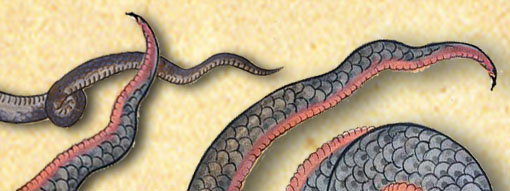My friend, colleague, and co-editor with J. Ryan Parker of Joss Whedon and Religion (McFarland, 2013), made me aware of this call for papers for an intriguing conference at Brown University. It is titled “Beasts Monsters, and the Fantastic in the Religious Imagination.” From the website:
An Interdisciplinary Graduate Student Conference
Hosted by the Department of Religious Studies at Brown University
February 28-March 1, 2014
With a keynote address delivered by John Lardas Modern, Franklin & Marshall College
Call for Papers
Beasts and monsters populate the religious imagination. From ancient cosmogonies and classical fairy tales to modern horror films and contemporary apocalyptic narratives, depictions of the strange and fantastic shape and challenge the categories by which human beings order their experience. Encounters with beasts and monsters in religious discourses can both undermine and reaffirm conceptions of what it means to be ordered or chaotic, native or foreign, and natural or unnatural. They often are invoked as a means to constitute and uphold human communities.
Representations of the radically other often have moral valences and serve as mechanisms to highlight the constellation of virtues (and vices) that define the brave (and often flawed) hero or heroine. Such archetypes can delimit a spectrum of human behavior and, in doing so, reinforce certain conceptions of religious and ethical formation. Encounters with the monstrous may also be moments of transcendence in which strangeness itself signifies the divine.
Depictions of beasts and monsters both attract and repel, always provocatively expanding the boundaries of the religious imagination. This conference aims to interrogate the role of the beast and monster across a wide range of religious discourses and to examine these figures in political, social, theoretical, and ethical contexts.
Possible topics may include, but are not limited to:
- Beauty, ugliness, disfigurement, and deformity
- Monsters in disguise: ways in which the beast or monster is recognized
- Beasts, monsters, and sacred geography
- Humanity, technology, and monstrosity
- Beasts and monsters as metaphors or instruments of propaganda
- Beasts or monsters in popular media and religious traditions
- Monsters and total moral failure
Abstracts for conference papers should be between 200 and 250 words, are due November 1, 2013, and should be emailed to the conference committee at BrownRSConference@gmail.com. Proposals should include the title of the paper, the presenter’s name, institutional and departmental affiliation, and any technology requests. We will notify applicants by December 1, 2013.






There are no responses yet